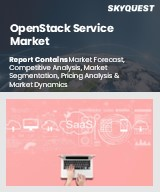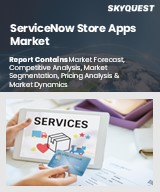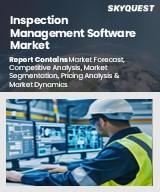
|
시장보고서
상품코드
1589756
세계의 에너지 클라우드 시장 : 솔루션, 서비스, 서비스 모델, 전개 모델, 조직 규모별 예측(2025-2030년)Energy Cloud Market by Solution (Customer Relationship Management, Enterprise Asset Management, Reporting & Analytics), Service (Managed Services, Professional Services), Service Model, Deployment Model, Organization Size - Global Forecast 2025-2030 |
||||||
에너지 클라우드 시장의 2023년 시장 규모는 198억 3,000만 달러, 2024년에는 237억 6,000만 달러에 달할 것으로 예측되며, CAGR 19.87%로 성장하여 2030년에는 705억 5,000만 달러에 달할 것으로 예측됩니다.
에너지 클라우드는 에너지 분야의 변화를 상징하는 개념으로, 집중적이고 유연성이 부족한 전력 시스템에서보다 분산형, 지능적이고 적응성이 높은 네트워크 아키텍처로의 전환을 포함합니다. 이 패러다임은 신재생에너지원, 에너지저장, IoT나 AI 등의 첨단기술의 통합을 가능하게 하고, 에너지 효율과 그리드 신뢰성의 길을 개척합니다. 에너지 클라우드의 필요성은 지속가능성, 회복력, 에너지 민주화, 기후 변화 대응, 에너지 안보 강화를 위한 세계의 추진력에서 비롯됩니다. 그 용도는 주택, 상업, 산업 등 최종 용도 분야 및 분산형 에너지 자원, 스마트 그리드, 수요 반응 시스템 등의 솔루션을 제공합니다.
| 주요 시장 통계 | |
|---|---|
| 기준년(2023) | 198억 3,000만 달러 |
| 예측년(2024) | 237억 6,000만 달러 |
| 예측년(2030) | 705억 5,000만 달러 |
| CAGR(%) | 19.87% |
시장 성장의 주요 촉진요인으로는 기술적 진보, 지지적인 규제 정책, 재생 가능하고 지속 가능한 에너지 솔루션에 대한 인식과 수요 증가 등이 있습니다. 잠재적인 비즈니스 기회는 스마트 시티의 보급, 전기자동차의 보급 확대, 마이크로그리드 및 분산 전력 시스템의 개발에 있습니다. 기업은 강화된 배터리 저장 기술, AI 주도 에너지 관리 시스템, 에너지 거래용 블록체인 등 혁신적인 솔루션의 연구 개발에 투자함으로써 이러한 기회를 포착할 수 있습니다. 그러나 시장 성장은 초기 비용 상승, 사이버 보안 위협 및 규제 복잡성과 같은 과제로 인해 막혔습니다. 또한 이종 시스템의 통합과 상호 운용성 유지가 큰 장애물이 되었습니다.
혁신과 연구는 에너지 저장 솔루션 개선, 인공지능 및 머신러닝을 통한 그리드 유연성 강화, 시스템 호환성을 위한 표준화된 프레임워크 개발에 중점을 두어야 합니다. 또한 기업은 전략적 파트너십과 협업을 모색하고 기술과 시장 개척을 추진해야 합니다. 시장의 성격은 역동적이며 강력한 성장세를 유지하고 있지만 진화하는 정책과 기준에 대한 적응성이 요구되는 고도로 규제된 환경에서 운영되고 있습니다. 에너지 클라우드의 패러다임이 에너지 정세를 재구축하는 동안 기업과 이해관계자는 지속 가능한 에너지의 미래를 추진하기 위해 새로운 동향을 민첩하게 파악하고 적극적으로 활용해야 합니다.
시장 역학: 급속히 진화하는 에너지 클라우드 시장의 주요 시장 인사이트 공개
에너지 클라우드 시장은 수요 및 공급의 역동적인 상호작용에 의해 변모를 이루고 있습니다. 새로운 비즈니스 기회를 얻는 데 도움이 될 수 있습니다. 이러한 동향을 종합적으로 파악함으로써 기업은 정치적, 지리적, 기술적, 사회적, 경제적인 영역에 걸친 다양한 리스크를 경감할 수 있음과 동시에 소비자 행동과 그것이 제조 비용과 구매 동향에 미치는 영향을 보다 명확하게 이해할 수 있습니다.
- 시장 성장 촉진요인
- 인프라의 노후화와 그리드의 보안 우려의 고조
- 고객 관계 관리의 필요성 증가
- 기업 전체의 의사결정을 개선하는 요구 증가
- 시장 성장 억제요인
- 에너지 클라우드에 관한 엄격한 규제와 컴플라이언스
- 시장 기회
- 첨단 에너지 클라우드 솔루션의 소개
- 스마트 에너지 관리와 사물의 인터넷화
- 시장의 과제
- 사이버 공격 증가
Porter's Five Forces: 에너지 클라우드 시장을 탐색하는 전략 도구
Porter's Five Forces 프레임 워크는 시장 상황경쟁 구도를 이해하는 중요한 도구입니다. 기법을 제공합니다. 기업이 시장 내 세력도를 평가하고 신규 사업의 수익성을 판단하는 데 도움이 됩니다. 당신은 더 강인한 시장에서 포지셔닝을 보장할 수 있습니다.
PESTLE 분석 : 에너지 클라우드 시장에서 외부 영향을 파악
외부 거시 환경 요인은 에너지 클라우드 시장의 성과 역학을 형성하는 데 매우 중요한 역할을합니다. 영향을 탐색하는 데 필요한 정보 제공 PESTLE 요인을 조사함으로써 기업은 잠재적인 위험과 기회를 더 잘 이해할 수 있습니다. 앞을 내다본 적극적인 의사결정을 할 준비가 되어 있습니다.
시장 점유율 분석 : 에너지 클라우드 시장 경쟁 구도 파악
에너지 클라우드 시장의 상세한 시장 점유율 분석을 통해 공급업체의 성과를 종합적으로 평가할 수 있습니다. 명 부드럽게 할 수 있습니다.이 분석은 시장 집중, 단편화 및 통합 동향을 명확히하고 벤더는 경쟁이 치열 해짐에 따라 자사의 지위를 높이는 전략적 의사 결정을 내리는 데 필요합니다. 지식을 얻을 수 있습니다.
FPNV 포지셔닝 매트릭스 : 에너지 클라우드 시장에서 공급업체의 성능 평가
FPNV 포지셔닝 매트릭스는 에너지 클라우드 시장에서 벤더를 평가하는 중요한 도구입니다. 에 기반한 의사 결정을 내릴 수 있습니다. 4개의 사분면을 통해 벤더를 명확하고 정확하게 부문화하고 전략 목표에 가장 적합한 파트너 및 솔루션을 파악할 수 있습니다.
전략 분석 및 권장 : 에너지 클라우드 시장에서 성공에 대한 길을 그립니다.
에너지 클라우드 시장의 전략 분석은 세계 시장에서의 프레즌스 강화를 목표로 하는 기업에 필수적입니다. 주요 자원, 역량 및 성과 지표를 검토함으로써 기업은 성장 기회를 파악하고 개선을 위해 노력할 수 있습니다. 이러한 접근 방식을 통해 경쟁 구도에서 과제를 극복하고 새로운 비즈니스 기회를 활용하여 장기적인 성공을 거둘 수 있는 체제를 구축할 수 있습니다.
이 보고서는 주요 관심 분야를 포괄하는 시장의 종합적인 분석을 제공합니다.
1. 시장 침투: 현재 시장 환경의 상세한 검토, 주요 기업의 광범위한 데이터, 시장 도달범위 및 전반적인 영향력 평가.
2. 시장 개척도: 신흥 시장의 성장 기회를 파악하고 기존 분야의 확장 가능성을 평가하며 미래 성장을 위한 전략적 로드맵을 제공합니다.
3. 시장 다양화: 최근 제품 출시, 미개척 지역, 업계의 주요 진보, 시장을 형성하는 전략적 투자를 분석합니다.
4. 경쟁 평가 및 정보 : 경쟁 구도를 철저히 분석하여 시장 점유율, 사업 전략, 제품 포트폴리오, 인증, 규제 당국 승인, 특허 동향, 주요 기업의 기술 진보 등을 검증합니다.
5. 제품 개발 및 혁신 : 미래 시장 성장을 가속할 것으로 예상되는 최첨단 기술, R&D 활동, 제품 혁신을 강조합니다.
또한 이해관계자가 충분한 정보를 얻고 의사결정을 할 수 있도록 중요한 질문에 대답하고 있습니다.
1. 현재 시장 규모와 향후 성장 예측은?
2. 최고의 투자 기회를 제공하는 제품, 부문 및 지역은 어디입니까?
3. 시장을 형성하는 주요 기술 동향과 규제의 영향은?
4. 주요 벤더의 시장 점유율과 경쟁 포지션은?
5. 벤더 시장 진입·철수 전략의 원동력이 되는 수익원과 전략적 기회는 무엇인가?
목차
제1장 서문
제2장 조사 방법
제3장 주요 요약
제4장 시장 개요
제5장 시장 인사이트
- 시장 역학
- 성장 촉진요인
- 노후화하는 인프라와 높아지는 전력망의 보안에 관한 우려
- 고객 관계 관리의 필요성이 높아진다
- 기업 전체에서 의사결정을 개선할 필요성이 높아진다
- 억제요인
- 에너지 클라우드의 엄격한 규제와 컴플라이언스
- 기회
- 첨단 에너지 클라우드 솔루션의 소개
- 스마트 에너지 관리와 사물의 인터넷
- 과제
- 사이버 공격 증가
- 성장 촉진요인
- 시장 세분화 분석
- Porter's Five Forces 분석
- PESTEL 분석
- 정치적
- 경제
- 사교
- 기술적
- 법률상
- 환경
제6장 에너지 클라우드 시장 : 솔루션별
- 고객관계관리
- 엔터프라이즈 자산 관리
- 보고서 및 분석
- 리스크와 컴플라이언스 관리
- 공급망 관리
- 인재 관리
제7장 에너지 클라우드 시장 : 서비스별
- 매니지드 서비스
- 전문 서비스
제8장 에너지 클라우드 시장 : 서비스 모델별
- 서비스로서의 인프라
- 서비스로서의 플랫폼
- 서비스로서의 소프트웨어
제9장 에너지 클라우드 시장 : 도입 모델별
- 하이브리드 클라우드
- 프라이빗 클라우드
- 퍼블릭 클라우드
제10장 에너지 클라우드 시장 : 조직 규모별
- 대기업
- 중소기업
제11장 아메리카의 에너지 클라우드 시장
- 아르헨티나
- 브라질
- 캐나다
- 멕시코
- 미국
제12장 아시아태평양의 에너지 클라우드 시장
- 호주
- 중국
- 인도
- 인도네시아
- 일본
- 말레이시아
- 필리핀
- 싱가포르
- 한국
- 대만
- 태국
- 베트남
제13장 유럽·중동 및 아프리카의 에너지 클라우드 시장
- 덴마크
- 이집트
- 핀란드
- 프랑스
- 독일
- 이스라엘
- 이탈리아
- 네덜란드
- 나이지리아
- 노르웨이
- 폴란드
- 카타르
- 러시아
- 사우디아라비아
- 남아프리카
- 스페인
- 스웨덴
- 스위스
- 터키
- 아랍에미리트(UAE)
- 영국
제14장 경쟁 구도
- 시장 점유율 분석 2023
- FPNV 포지셔닝 매트릭스, 2023
- 경쟁 시나리오 분석
- 전략 분석과 제안
기업 목록
- Accenture PLC
- Adobe Inc.
- Alibaba Group Holding Limited
- Amazon Web Services, Inc.
- Capgemini
- Cisco Systems, Inc.
- Google LLC by Alphabet Inc.
- HCL Technologies Limited
- Hewlett Packard Enterprise Development LP
- International Business Machines Corporation
- Microsoft Corporation
- Oracle Corporation
- SAP SE
- TATA Consultancy Services Limited
- VMware, Inc.
The Energy Cloud Market was valued at USD 19.83 billion in 2023, expected to reach USD 23.76 billion in 2024, and is projected to grow at a CAGR of 19.87%, to USD 70.55 billion by 2030.
The Energy Cloud represents a transformative concept in the energy sector, encompassing the shift from centralized, inflexible power systems to more distributed, intelligent, and adaptable network architectures. This paradigm enables increased integration of renewable energy sources, energy storage, and advanced technologies such as IoT and AI, which forge the path for energy efficiency and grid reliability. The necessity of the Energy Cloud arises from the global push towards sustainability, resilience, and energy democratization, addressing climate change, and enhancing energy security. Its application spans several end-use sectors, including residential, commercial, and industrial domains, offering solutions like distributed energy resources, smart grids, and demand response systems.
| KEY MARKET STATISTICS | |
|---|---|
| Base Year [2023] | USD 19.83 billion |
| Estimated Year [2024] | USD 23.76 billion |
| Forecast Year [2030] | USD 70.55 billion |
| CAGR (%) | 19.87% |
Key market growth drivers include technological advancements, supportive regulatory policies, and rising awareness and demand for renewable and sustainable energy solutions. Potential opportunities lie in the proliferation of smart cities, the increasing penetration of electric vehicles, and the development of microgrids and decentralized power systems. Companies can seize these opportunities by investing in R&D for innovative solutions such as enhanced battery storage technologies, AI-driven energy management systems, and blockchain for energy transactions. However, market growth is challenged by factors such as high initial costs, cybersecurity threats, and regulatory complexities. Additionally, the integration of disparate systems and maintaining interoperability pose significant hurdles.
Innovation and research should focus on improving energy storage solutions, enhancing grid flexibility with AI and machine learning, and developing standardized frameworks for system compatibility. Businesses should also explore strategic partnerships and collaborations to advance their technologies and market reach. The market's nature is dynamic and poised for robust growth, albeit it operates in a highly regulated environment demanding adaptability to evolving policies and standards. As the Energy Cloud paradigm reshapes the energy landscape, businesses and stakeholders must remain agile, informed, and proactive in leveraging emerging trends to propel a sustainable energy future.
Market Dynamics: Unveiling Key Market Insights in the Rapidly Evolving Energy Cloud Market
The Energy Cloud Market is undergoing transformative changes driven by a dynamic interplay of supply and demand factors. Understanding these evolving market dynamics prepares business organizations to make informed investment decisions, refine strategic decisions, and seize new opportunities. By gaining a comprehensive view of these trends, business organizations can mitigate various risks across political, geographic, technical, social, and economic domains while also gaining a clearer understanding of consumer behavior and its impact on manufacturing costs and purchasing trends.
- Market Drivers
- Aging infrastructure and rising grid security concerns
- Increasing need for customer relationship management
- Growing need for improving decision making across enterprises
- Market Restraints
- Stringent regulation and compliance for energy cloud
- Market Opportunities
- Introduction of advanced energy cloud solutions
- Smart energy management and internet of things
- Market Challenges
- Increasing number of cyberattacks
Porter's Five Forces: A Strategic Tool for Navigating the Energy Cloud Market
Porter's five forces framework is a critical tool for understanding the competitive landscape of the Energy Cloud Market. It offers business organizations with a clear methodology for evaluating their competitive positioning and exploring strategic opportunities. This framework helps businesses assess the power dynamics within the market and determine the profitability of new ventures. With these insights, business organizations can leverage their strengths, address weaknesses, and avoid potential challenges, ensuring a more resilient market positioning.
PESTLE Analysis: Navigating External Influences in the Energy Cloud Market
External macro-environmental factors play a pivotal role in shaping the performance dynamics of the Energy Cloud Market. Political, Economic, Social, Technological, Legal, and Environmental factors analysis provides the necessary information to navigate these influences. By examining PESTLE factors, businesses can better understand potential risks and opportunities. This analysis enables business organizations to anticipate changes in regulations, consumer preferences, and economic trends, ensuring they are prepared to make proactive, forward-thinking decisions.
Market Share Analysis: Understanding the Competitive Landscape in the Energy Cloud Market
A detailed market share analysis in the Energy Cloud Market provides a comprehensive assessment of vendors' performance. Companies can identify their competitive positioning by comparing key metrics, including revenue, customer base, and growth rates. This analysis highlights market concentration, fragmentation, and trends in consolidation, offering vendors the insights required to make strategic decisions that enhance their position in an increasingly competitive landscape.
FPNV Positioning Matrix: Evaluating Vendors' Performance in the Energy Cloud Market
The Forefront, Pathfinder, Niche, Vital (FPNV) Positioning Matrix is a critical tool for evaluating vendors within the Energy Cloud Market. This matrix enables business organizations to make well-informed decisions that align with their goals by assessing vendors based on their business strategy and product satisfaction. The four quadrants provide a clear and precise segmentation of vendors, helping users identify the right partners and solutions that best fit their strategic objectives.
Strategy Analysis & Recommendation: Charting a Path to Success in the Energy Cloud Market
A strategic analysis of the Energy Cloud Market is essential for businesses looking to strengthen their global market presence. By reviewing key resources, capabilities, and performance indicators, business organizations can identify growth opportunities and work toward improvement. This approach helps businesses navigate challenges in the competitive landscape and ensures they are well-positioned to capitalize on newer opportunities and drive long-term success.
Key Company Profiles
The report delves into recent significant developments in the Energy Cloud Market, highlighting leading vendors and their innovative profiles. These include Accenture PLC, Adobe Inc., Alibaba Group Holding Limited, Amazon Web Services, Inc., Capgemini, Cisco Systems, Inc., Google LLC by Alphabet Inc., HCL Technologies Limited, Hewlett Packard Enterprise Development LP, International Business Machines Corporation, Microsoft Corporation, Oracle Corporation, SAP SE, TATA Consultancy Services Limited, and VMware, Inc..
Market Segmentation & Coverage
This research report categorizes the Energy Cloud Market to forecast the revenues and analyze trends in each of the following sub-markets:
- Based on Solution, market is studied across Customer Relationship Management, Enterprise Asset Management, Reporting & Analytics, Risk & Compliance Management, Supply Chain Management, and Workforce Management.
- Based on Service, market is studied across Managed Services and Professional Services.
- Based on Service Model, market is studied across Infrastructure as A Service, Platform as A Service, and Software as A Service.
- Based on Deployment Model, market is studied across Hybrid Cloud, Private Cloud, and Public Cloud.
- Based on Organization Size, market is studied across Large Enterprises and Small & Medium Enterprises.
- Based on Region, market is studied across Americas, Asia-Pacific, and Europe, Middle East & Africa. The Americas is further studied across Argentina, Brazil, Canada, Mexico, and United States. The United States is further studied across California, Florida, Illinois, New York, Ohio, Pennsylvania, and Texas. The Asia-Pacific is further studied across Australia, China, India, Indonesia, Japan, Malaysia, Philippines, Singapore, South Korea, Taiwan, Thailand, and Vietnam. The Europe, Middle East & Africa is further studied across Denmark, Egypt, Finland, France, Germany, Israel, Italy, Netherlands, Nigeria, Norway, Poland, Qatar, Russia, Saudi Arabia, South Africa, Spain, Sweden, Switzerland, Turkey, United Arab Emirates, and United Kingdom.
The report offers a comprehensive analysis of the market, covering key focus areas:
1. Market Penetration: A detailed review of the current market environment, including extensive data from top industry players, evaluating their market reach and overall influence.
2. Market Development: Identifies growth opportunities in emerging markets and assesses expansion potential in established sectors, providing a strategic roadmap for future growth.
3. Market Diversification: Analyzes recent product launches, untapped geographic regions, major industry advancements, and strategic investments reshaping the market.
4. Competitive Assessment & Intelligence: Provides a thorough analysis of the competitive landscape, examining market share, business strategies, product portfolios, certifications, regulatory approvals, patent trends, and technological advancements of key players.
5. Product Development & Innovation: Highlights cutting-edge technologies, R&D activities, and product innovations expected to drive future market growth.
The report also answers critical questions to aid stakeholders in making informed decisions:
1. What is the current market size, and what is the forecasted growth?
2. Which products, segments, and regions offer the best investment opportunities?
3. What are the key technology trends and regulatory influences shaping the market?
4. How do leading vendors rank in terms of market share and competitive positioning?
5. What revenue sources and strategic opportunities drive vendors' market entry or exit strategies?
Table of Contents
1. Preface
- 1.1. Objectives of the Study
- 1.2. Market Segmentation & Coverage
- 1.3. Years Considered for the Study
- 1.4. Currency & Pricing
- 1.5. Language
- 1.6. Stakeholders
2. Research Methodology
- 2.1. Define: Research Objective
- 2.2. Determine: Research Design
- 2.3. Prepare: Research Instrument
- 2.4. Collect: Data Source
- 2.5. Analyze: Data Interpretation
- 2.6. Formulate: Data Verification
- 2.7. Publish: Research Report
- 2.8. Repeat: Report Update
3. Executive Summary
4. Market Overview
5. Market Insights
- 5.1. Market Dynamics
- 5.1.1. Drivers
- 5.1.1.1. Aging infrastructure and rising grid security concerns
- 5.1.1.2. Increasing need for customer relationship management
- 5.1.1.3. Growing need for improving decision making across enterprises
- 5.1.2. Restraints
- 5.1.2.1. Stringent regulation and compliance for energy cloud
- 5.1.3. Opportunities
- 5.1.3.1. Introduction of advanced energy cloud solutions
- 5.1.3.2. Smart energy management and internet of things
- 5.1.4. Challenges
- 5.1.4.1. Increasing number of cyberattacks
- 5.1.1. Drivers
- 5.2. Market Segmentation Analysis
- 5.3. Porter's Five Forces Analysis
- 5.3.1. Threat of New Entrants
- 5.3.2. Threat of Substitutes
- 5.3.3. Bargaining Power of Customers
- 5.3.4. Bargaining Power of Suppliers
- 5.3.5. Industry Rivalry
- 5.4. PESTLE Analysis
- 5.4.1. Political
- 5.4.2. Economic
- 5.4.3. Social
- 5.4.4. Technological
- 5.4.5. Legal
- 5.4.6. Environmental
6. Energy Cloud Market, by Solution
- 6.1. Introduction
- 6.2. Customer Relationship Management
- 6.3. Enterprise Asset Management
- 6.4. Reporting & Analytics
- 6.5. Risk & Compliance Management
- 6.6. Supply Chain Management
- 6.7. Workforce Management
7. Energy Cloud Market, by Service
- 7.1. Introduction
- 7.2. Managed Services
- 7.3. Professional Services
8. Energy Cloud Market, by Service Model
- 8.1. Introduction
- 8.2. Infrastructure as A Service
- 8.3. Platform as A Service
- 8.4. Software as A Service
9. Energy Cloud Market, by Deployment Model
- 9.1. Introduction
- 9.2. Hybrid Cloud
- 9.3. Private Cloud
- 9.4. Public Cloud
10. Energy Cloud Market, by Organization Size
- 10.1. Introduction
- 10.2. Large Enterprises
- 10.3. Small & Medium Enterprises
11. Americas Energy Cloud Market
- 11.1. Introduction
- 11.2. Argentina
- 11.3. Brazil
- 11.4. Canada
- 11.5. Mexico
- 11.6. United States
12. Asia-Pacific Energy Cloud Market
- 12.1. Introduction
- 12.2. Australia
- 12.3. China
- 12.4. India
- 12.5. Indonesia
- 12.6. Japan
- 12.7. Malaysia
- 12.8. Philippines
- 12.9. Singapore
- 12.10. South Korea
- 12.11. Taiwan
- 12.12. Thailand
- 12.13. Vietnam
13. Europe, Middle East & Africa Energy Cloud Market
- 13.1. Introduction
- 13.2. Denmark
- 13.3. Egypt
- 13.4. Finland
- 13.5. France
- 13.6. Germany
- 13.7. Israel
- 13.8. Italy
- 13.9. Netherlands
- 13.10. Nigeria
- 13.11. Norway
- 13.12. Poland
- 13.13. Qatar
- 13.14. Russia
- 13.15. Saudi Arabia
- 13.16. South Africa
- 13.17. Spain
- 13.18. Sweden
- 13.19. Switzerland
- 13.20. Turkey
- 13.21. United Arab Emirates
- 13.22. United Kingdom
14. Competitive Landscape
- 14.1. Market Share Analysis, 2023
- 14.2. FPNV Positioning Matrix, 2023
- 14.3. Competitive Scenario Analysis
- 14.4. Strategy Analysis & Recommendation
Companies Mentioned
- 1. Accenture PLC
- 2. Adobe Inc.
- 3. Alibaba Group Holding Limited
- 4. Amazon Web Services, Inc.
- 5. Capgemini
- 6. Cisco Systems, Inc.
- 7. Google LLC by Alphabet Inc.
- 8. HCL Technologies Limited
- 9. Hewlett Packard Enterprise Development LP
- 10. International Business Machines Corporation
- 11. Microsoft Corporation
- 12. Oracle Corporation
- 13. SAP SE
- 14. TATA Consultancy Services Limited
- 15. VMware, Inc.



















